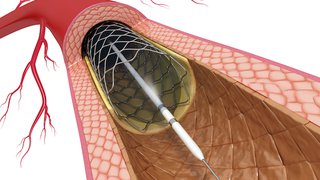Expert Diagnosis and Treatment of Angina
Angina is chest pain that originates in the heart. An indicator of coronary artery disease, angina also is a sign that a heart attack could be imminent. UT Southwestern’s experienced heart doctors offer a wide variety of diagnostic tests and treatments for angina and the cardiovascular conditions that cause it.
Our team also focuses on patient education. This includes teaching patients the importance of knowing their family history of heart disease and risk factors such as high blood pressure (hypertension) and lipid disorders (such as high cholesterol).
In addition, UT Southwestern is home to a dedicated Cardiac Rehabilitation Program. Cardiac rehabilitation is a critical component of recovery and can prevent future heart disease.
Causes and Risk Factors
Angina is often caused by myocardial ischemia, which is improper blood flow through the vessels that feed the heart. This condition leads to a blood-supply imbalance and excessive oxygen demand on the heart. Myocardial ischemia can result from atherosclerosis, a buildup of fat and cholesterol inside the vessels that flow to the coronary arteries.
Other causes of angina include coronary artery spasms and decreased oxygen-carrying capacity of the blood.
Risk factors for angina include:
- Carboxyhemoglobin/anemia
- Cardiomyopathy, or disease of the heart muscle
- Collagen vascular diseases
- Congenital heart disease
- Diabetes
- Lipid disorders, such as high cholesterol
- Hypertension (high blood pressure)
- Metabolic syndrome
- Obesity
- Smoking
- Syndrome X: Chest pain without coronary artery blockages, often found in women
Symptoms of Angina (Chest Pain)
Angina is chest discomfort or pain, often experienced as a feeling of pressure, heaviness, squeezing, or burning. Other symptoms of angina include:
- Pain in the back, neck, chest, jaw, or shoulders
- Pain that doesn’t change with cough or breathing
- Pain brought on by exertion, eating, cold, or stress
- Pain that lasts one to five minutes and is relieved by nitroglycerin
Diagnosis of Angina (Chest Pain)
Unless there are other causes, UT Southwestern cardiologists often can diagnose angina by conducting a thorough physical exam and discussion of a patient’s medical history, contributing lifestyle factors, and family history of heart disease.
Additional studies to diagnose angina and determine its underlying cause might include:
- Arteriography: To visualize arterial narrowing using a contrast dye
- Cardiac catheterization: To visualize the heart’s internal structures
- Echocardiography (echo or cardiac ultrasound): To visualize the heart
- Coronary angiography: To visualize blockages in the coronary arteries
- Electrocardiogram (ECG): To evaluate heart rate and rhythm by tracking changes in the strength and timing of the electrical impulses passing through the heart’s chambers
- Graded exercise stress test, performed with or without echocardiography or myocardial perfusion tests: To assess heart function – such as heart-muscle strength and blood-pumping efficiency – by testing the heart at an increased-demand state
- Stress echocardiography: To evaluate changes in heart wall motion during exercise
- Levine sign: To help the patient describe pain by clenching the fist over the chest
- Myocardial perfusion study: To evaluate perfusion defects
- New York Heart Association (NYHA) functional assessment:
- Class I: Ordinary physical activity does not cause symptoms.
- Class II: Ordinary physical activity causes symptoms.
- Class III: Comfortable at rest, but less than ordinary activities cause symptoms.
- Class IV: Symptoms occur at rest.
Angina (Chest Pain) Treatment
Angina treatment options include:
- Lifestyle changes such as exercise to improve blood flow, weight loss, reduction of sodium intake, and nicotine cessation therapy for patients who smoke
- Medications such as aspirin to reduce the risk of blood clots; beta blockers to decrease heart rate and blood pressure; nitrates (such as nitroglycerin) to improve heart blood supply and reduce symptoms; and calcium channel blockers to relax artery tone
- Management of conditions such as diabetes, hypertension, obesity, and high cholesterol
- Surgical interventions such as balloon angioplasty and heart stenting; intra-aortic balloon pump for unstable angina not controlled by medications; and coronary artery bypass grafting (bypass surgery)
Support Services
UT Southwestern’s cardiac rehabilitation specialists create customized plans that integrate proper nutrition, exercise, and, if necessary, nicotine cessation into patients’ lifestyles to improve their cardiovascular health.
Clinical Trials
As one of the nation’s top academic medical centers, UT Southwestern offers a number of clinical trials aimed at improving the outcomes of patients with cardiovascular disease.
Clinical trials often give patients access to leading-edge treatments that are not yet widely available. Eligible patients who choose to participate in one of UT Southwestern’s clinical trials might receive treatments years before they are available to the public.






